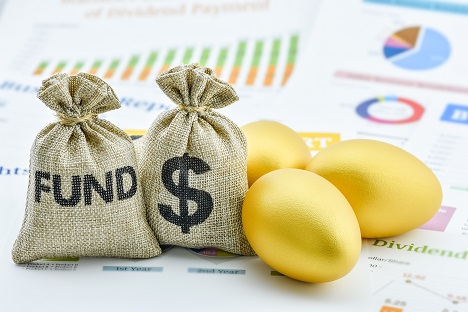Don’t Buy Bond Funds

A while back, I was reading an article about bond funds. The subhead read, “The trick next year will be to avoid losing money”.
The first sentence should have been “Don’t buy bond funds.”
What should the line after that have read?
“The end.”
The writer could have saved himself 700 words, taken the afternoon off, and caught a matinee. Instead, he wasted readers’ time showing them how little they’d lose if they bought the “top bond funds” featured in the article.
Why are bond funds near-certain losers when bonds are so important to balancing a portfolio? It has to do with the mechanics of a bond.
When interest rates rise, bond prices fall. Say you buy a bond yielding 5%. The next year, the Fed raises rates a full percentage point. That 5% yield is not quite as valuable in a higher interest rate environment – not when you can get an identical bond for 6%. So the price of the bond falls (increasing the yield).
But none of that matters if you plan on holding the bond until maturity.
If you bought the bond at par ($100) and the price dips to $90, you’ll get only $90 if you sell it – instead of $100. But if you hold it until maturity, you’ll get your full $100. Note that bonds are sold in increments of $1,000 but are quoted at one-tenth the price. So a $1,000 bond that is at par will have a $100 price. A bond that is priced at $90 will be worth $900.
So there’s nothing wrong with owning individual bonds in your portfolio – if you plan on holding them to maturity. In fact, I recommend it.
Bond funds are different.
When you buy a fund, the price of the fund is based on the value of the assets.
As an example, let’s say the bond fund has 1 million shares outstanding and the fund manager buys $20 million worth of bonds at $100 each. The fund price would be $20 ($20 million divided by 1 million shares).
Then interest rates go up, and the bonds decline in value to $90 each. The price of the fund drops to $18. As with individual bonds, if you sell now, you’ll take a loss. But unlike owning individual bonds, the fund never matures.
Those original $20 million worth of bonds will eventually mature, sure. But the fund manager is unlikely to keep them in the portfolio. They have no reason to.
Fund managers are usually incentivized to beat specific benchmarks, like a bond index. For that reason, they notoriously overtrade their portfolios.
For example, one of the largest actively managed bond funds, the PIMCO Income Fund (PIMIX), has a current yearly turnover rate of 400%, meaning that it sells every bond in its portfolio at least four times per year.
Its cousin, the PIMCO Total Return Institutional Fund (PTTRX), beats that at 430% (and previously a whopping 723%), meaning it replaces its entire portfolio more than four times each year. Another large bond fund, the Metropolitan West Total Return Bond Fund (MWTIX), currently buys and sells its entire portfolio almost five times a year at a 470% turnover rate.
All that trading not only runs up costs but also ensures investors will realize losses as rates go higher.
Bond funds are a nearly guaranteed way to lose money. Even when rates do head lower, it is likely to be temporary. Instead of using funds, you can be satisfied with the higher yields you earn on your individual bonds – and see lower prices as a buying opportunity.
It’s not always easy to make money in the market, but it can be easy not to lose it. Don’t buy bond funds.
Disclaimer: Nothing published by Wealthy Retirement should be considered personalized investment advice. Although our employees may answer your general customer service questions, they are not ...
more


